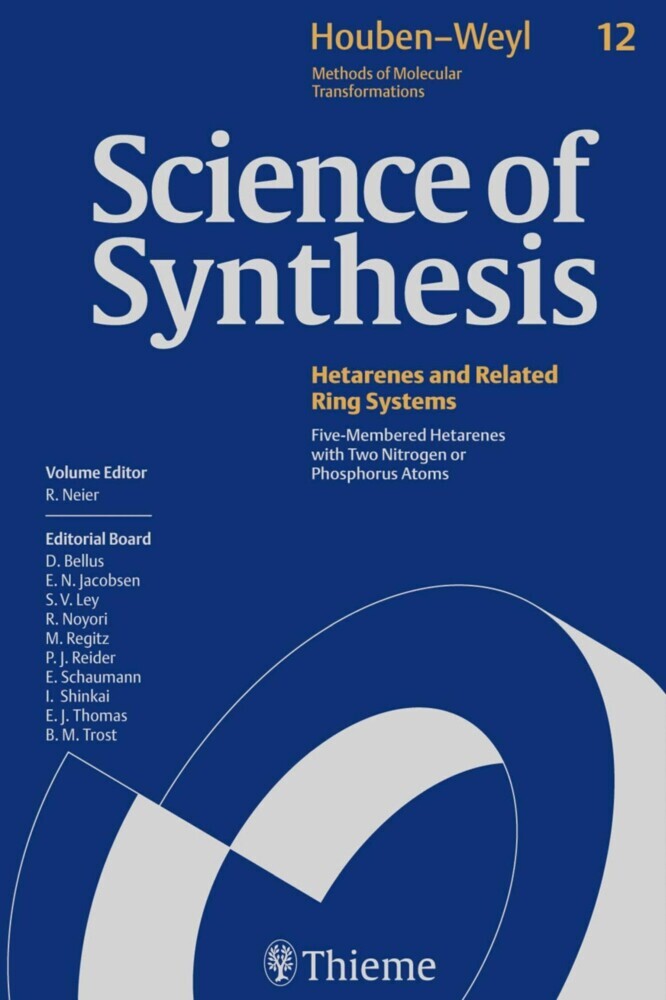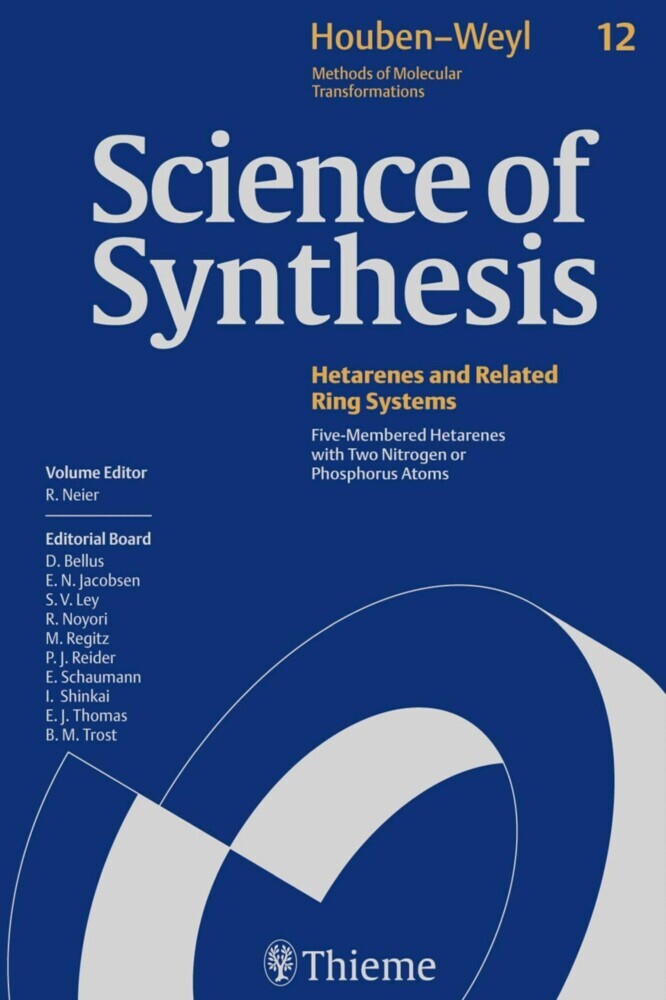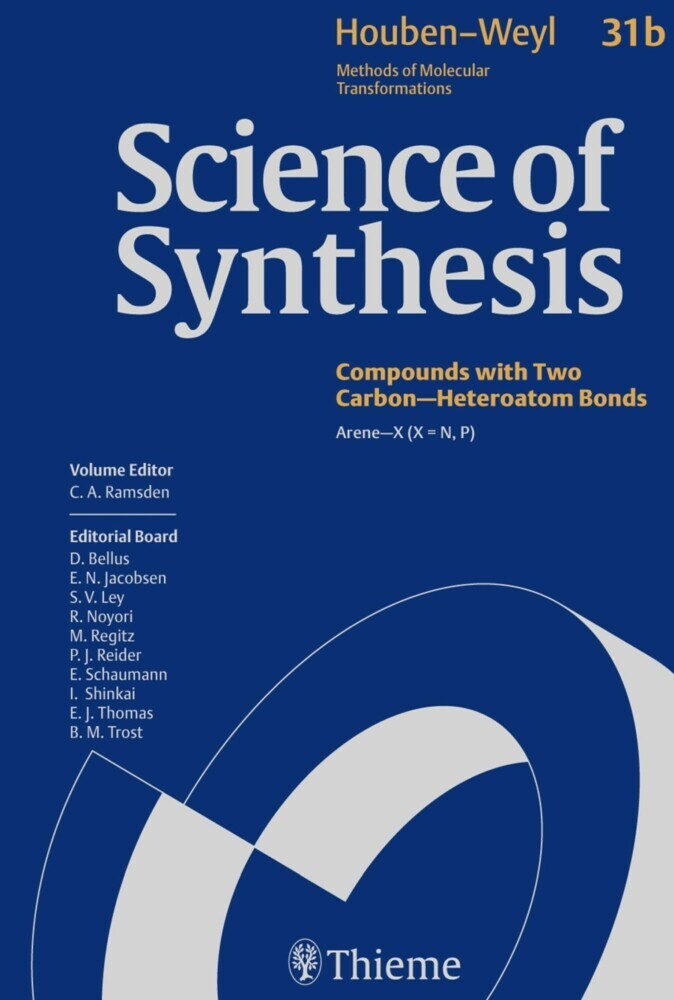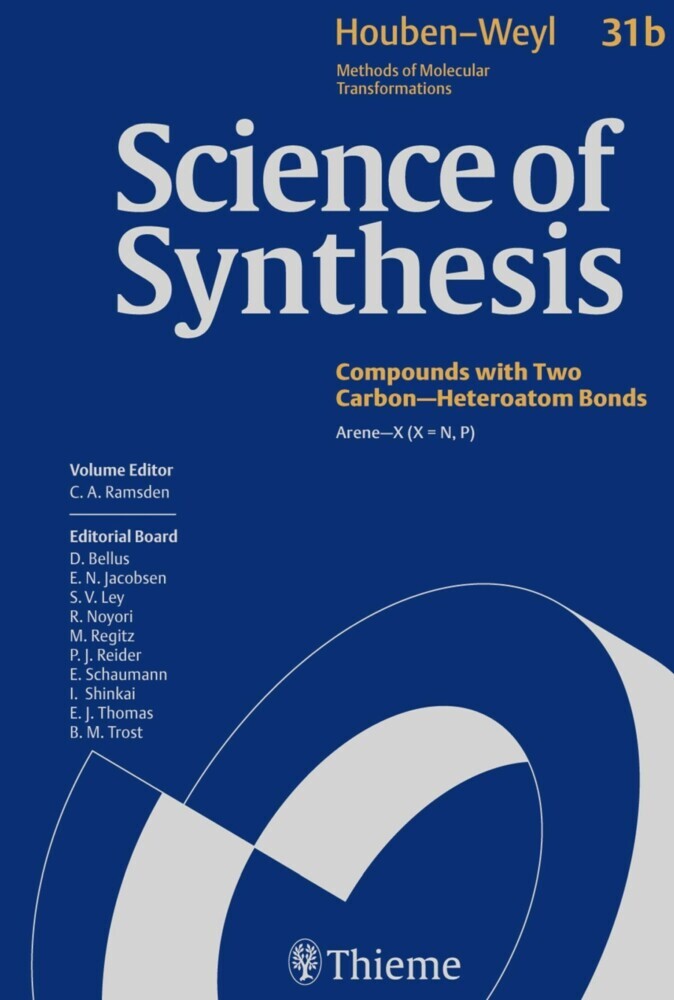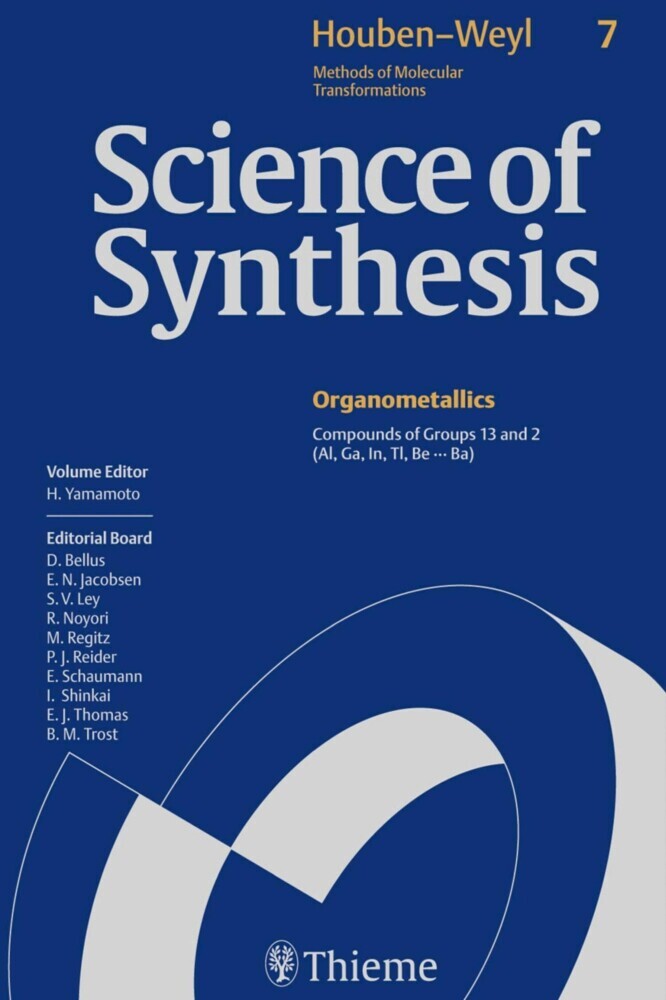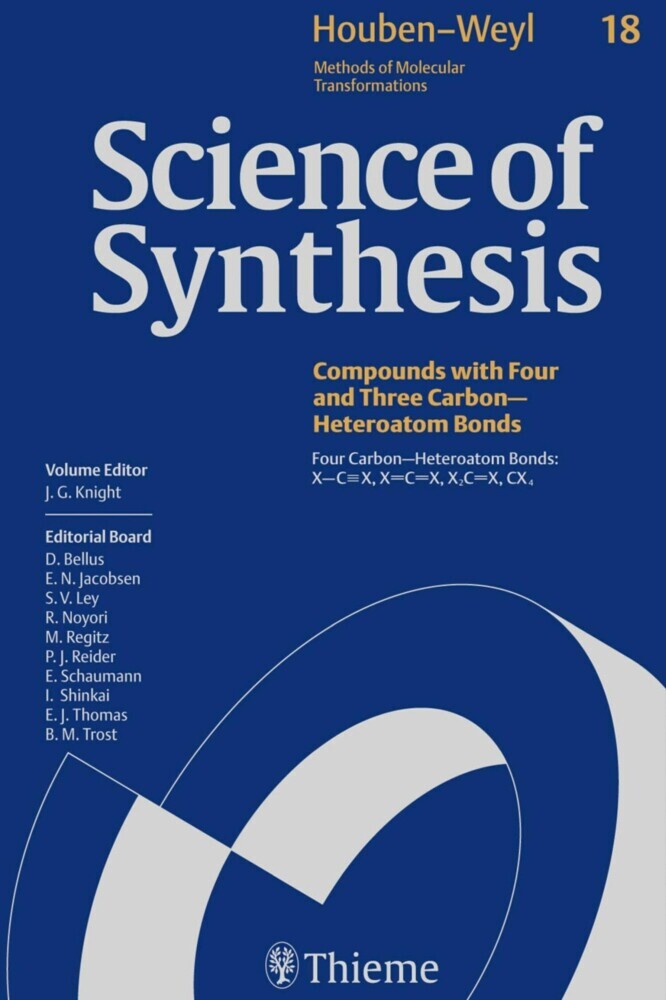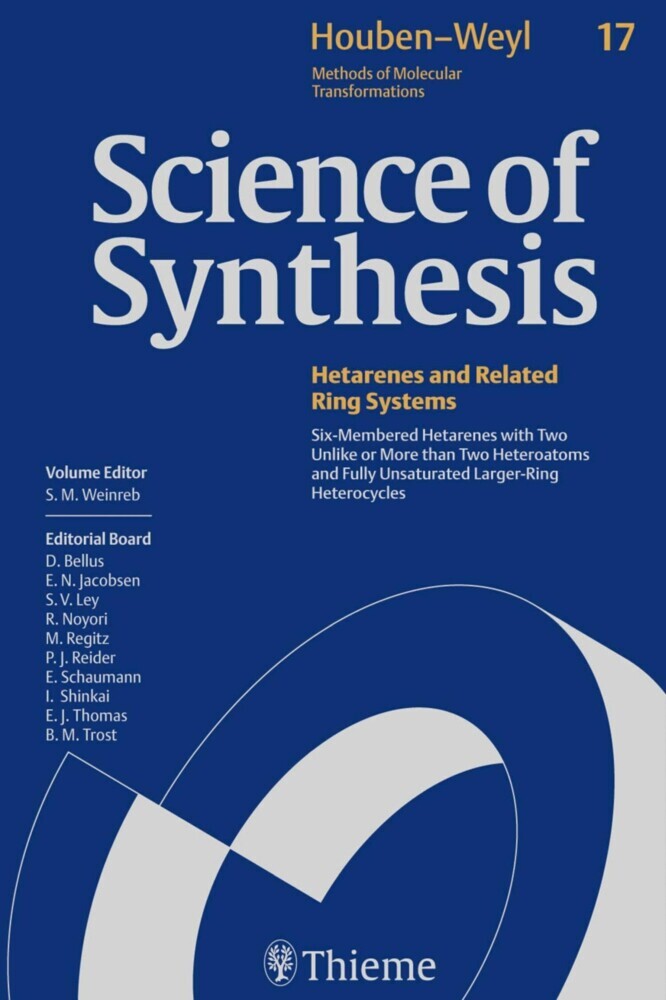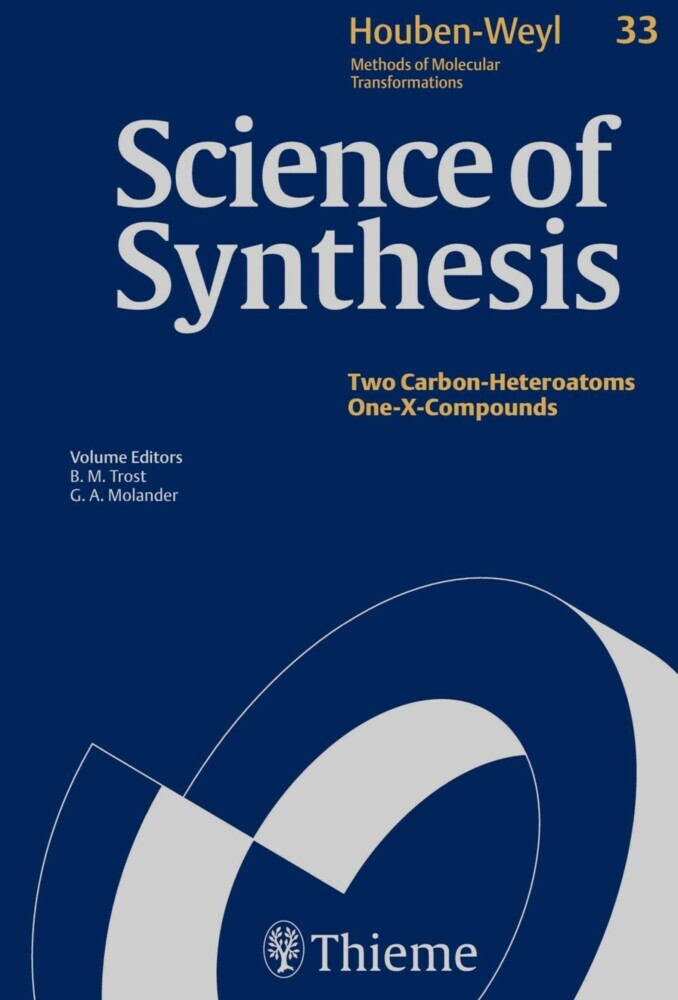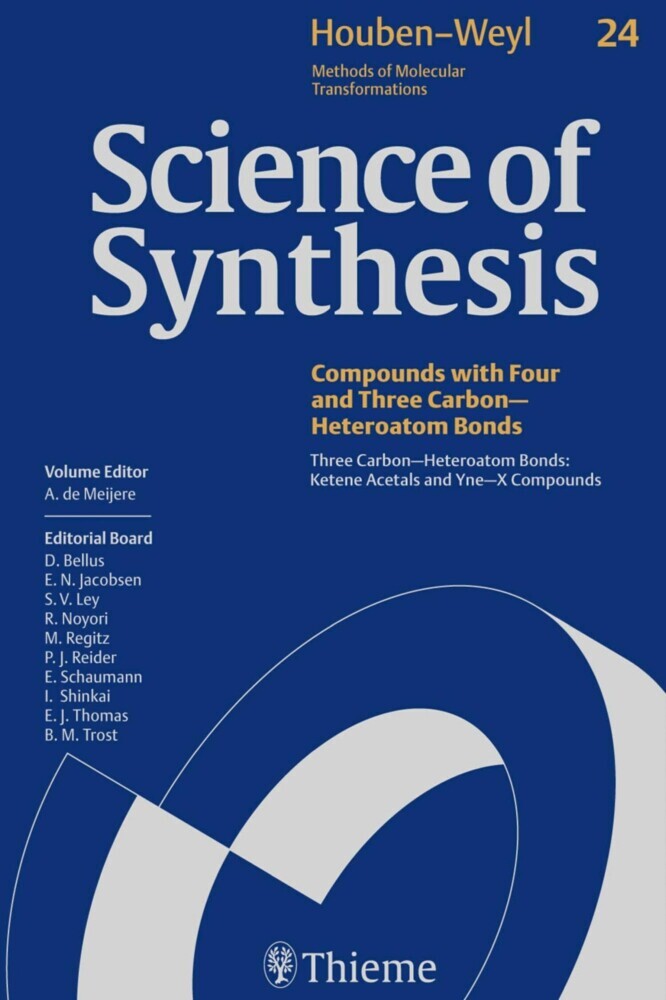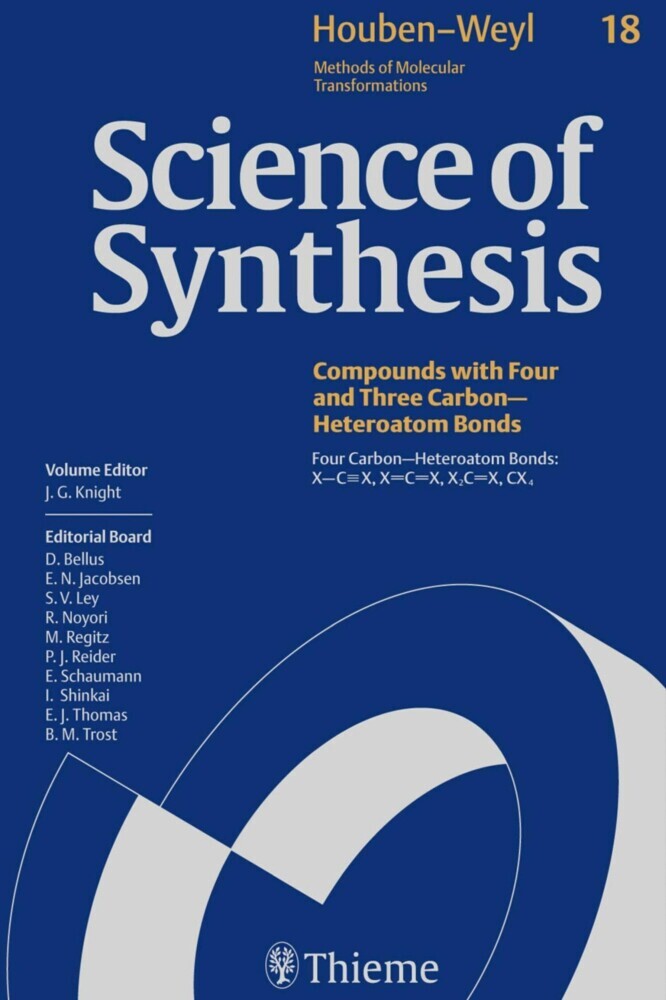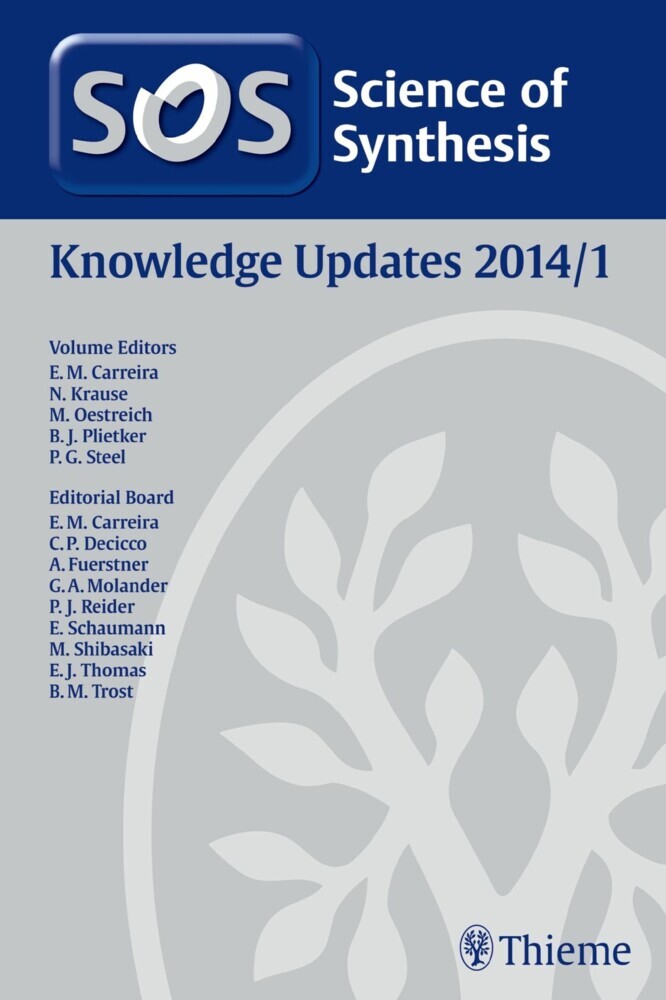Science of Synthesis: Houben-Weyl Methods of Molecular Transformations Vol. 12
Science of Synthesis: Houben-Weyl Methods of Molecular Transformations Vol. 12
Turning Information into Knowledge
Science of Synthesis: Houben-Weyl Methods of Molecular Transformations is the entirely new edition of the acclaimed reference series, Houben-Weyl, the standard synthetic chemistry resource since 1909. This new edition is published in English and will comprise of 48 volumes published between the years 2000 and 2008.
Science of Synthesis is a quality reference work developed by a highly esteemed editorial board to provide a comprehensive and critical selection of reliable organic and organometallic synthetic methods. Science of Synthesis is designed to be the first point of reference when searching for a synthesis strategy.
This volume covers the synthesis of five-membered heterocyclic compounds with either two nitrogen or phosphorus atoms or five-membered heterocycles containing both one nitrogen and one phosphorus atom. The oxidation state of the described heterocycles corresponds to the maximum unsaturation. Maximum unsaturation means that the cyclic conjugation in the five-membered ring must not be interrupted by either an sp3-hybridized carbon atom or a heteroatom incapable of pi-conjugation.
For full information on the Science of Synthesis series, visit the Science of Synthesis Homepage.
Series Editors: D. Bellus, S. V. Ley, R. Noyori, M. Regitz, E. Schaumann, I. Shinkai, E. J. Thomas, B. M. Trost, P. J. Reider
Reinhard Neier
1;Science of Synthesis - Volume 12: Five-Membered Hetarenes with Two Nitrogen or Phosphorus Atoms;1 1.1;Title page;3 1.2;Imprint;5 1.3;Preface;6 1.4;Volume Editor's Preface;8 1.5;Overview;10 1.6;Table of Contents;12 1.7;Introduction;38 1.8;12.1 Product Class 1: Pyrazoles;52 1.8.1;12.1.1 Synthesis by Ring-Closure Reactions;58 1.8.1.1;12.1.1.1 By Formation of One N--C and Two C--C Bonds;58 1.8.1.1.1;12.1.1.1.1 Fragments N--N--C, C, and C;58 1.8.1.1.1.1;12.1.1.1.1.1 Method 1: From [(Aryldiazenyl)(methoxycarbonyl)methylene]triphenylphosphoranes and Dichlorocarbene;58 1.8.1.2;12.1.1.2 By Formation of Two N--C Bonds;59 1.8.1.2.1;12.1.1.2.1 Fragments C--C--C and N--N;59 1.8.1.2.1.1;12.1.1.2.1.1 From 1,3-Dicarbonyl Compounds (and Acetals Thereof) and Hydrazines;59 1.8.1.2.1.1.1;12.1.1.2.1.1.1 Method 1: From O,O-Acetals of 1,3-Dicarbonyl Compounds and Hydrazines;60 1.8.1.2.1.1.1.1;12.1.1.2.1.1.1.1 Variation 1: From Malonaldehyde Acetals and Hydrazines;60 1.8.1.2.1.1.1.2;12.1.1.2.1.1.1.2 Variation 2: From 3,3-Dialkoxyalkan-1-ones and Hydrazines;61 1.8.1.2.1.1.2;12.1.1.2.1.1.2 Method 2: From Malonaldehyde and Derivatives and Hydrazines;62 1.8.1.2.1.1.3;12.1.1.2.1.1.3 Method 3: From ß-Oxoaldehydes and Hydrazines;62 1.8.1.2.1.1.3.1;12.1.1.2.1.1.3.1 Variation 1: From Carbonyl Compounds and Alkyl Formate Followed by Reaction with Hydrazine Hydrate;63 1.8.1.2.1.1.4;12.1.1.2.1.1.4 Method 4: From ß-Diketones and Hydrazines;65 1.8.1.2.1.1.4.1;12.1.1.2.1.1.4.1 Variation 1: From 2-Hydroxyimino-1,3-dicarbonyl Compounds and Hydrazines;69 1.8.1.2.1.1.4.2;12.1.1.2.1.1.4.2 Variation 2: From 2-Acetoxy-1,3-dicarbonyl Compounds and Hydrazines;70 1.8.1.2.1.1.4.3;12.1.1.2.1.1.4.3 Variation 3: From Tetracarbonyl Compounds and Hydrazines;70 1.8.1.2.1.1.5;12.1.1.2.1.1.5 Method 5: From ß-Diketones and Acylhydrazines;71 1.8.1.2.1.1.6;12.1.1.2.1.1.6 Method 6: From 2-Arylazo-1,3-dicarbonyl Compounds and Acylhydrazines;72 1.8.1.2.1.1.7;12.1.1.2.1.1.7 Method 7: From 3-Oxocarboxylic Acids and Hydrazines;73 1.8.1.2.1.1.7.1;12.1.1.2.1.1.7.1 Variation 1: From 3-Oxocarboxylic Acids and 1-Alkyl-1-nitrosohydrazines;78 1.8.1.2.1.1.7.2;12.1.1.2.1.1.7.2 Variation 2: From 3-Oxocarbodithioic Esters or 3-Oxocarbothioamides and Hydrazine;78 1.8.1.2.1.1.8;12.1.1.2.1.1.8 Method 8: From 3-Oxocarboxylic Acid Derivatives and Acylhydrazines;79 1.8.1.2.1.1.9;12.1.1.2.1.1.9 Method 9: From a-Cyano Ketones and Hydrazines;80 1.8.1.2.1.1.9.1;12.1.1.2.1.1.9.1 Variation 1: From a-Cyano-a-(N-methylanilino) Ketones and Hydrazines;81 1.8.1.2.1.1.9.2;12.1.1.2.1.1.9.2 Variation 2: From a-Cyano Ketones and Semicarbazides and Thiosemicarbazides;81 1.8.1.2.1.1.9.3;12.1.1.2.1.1.9.3 Variation 3: From a-Cyano Ketones and Arylsulfonylhydrazides;82 1.8.1.2.1.1.9.4;12.1.1.2.1.1.9.4 Variation 4: From a-Cyano-a-hydroxyimino Ketones and Hydrazines;83 1.8.1.2.1.1.10;12.1.1.2.1.1.10 Method 10: From Malonic Acid Derivatives and Hydrazines;83 1.8.1.2.1.1.10.1;12.1.1.2.1.1.10.1 Variation 1: From Malonic Acid Derivatives and Arylhydrazines;84 1.8.1.2.1.1.10.2;12.1.1.2.1.1.10.2 Variation 2: From Malonic Acid Derivatives and 1-Acetyl-2-arylhydrazines;84 1.8.1.2.1.1.10.3;12.1.1.2.1.1.10.3 Variation 3: From Malonic Acid Anilide Esters and Arylhydrazines;85 1.8.1.2.1.1.10.4;12.1.1.2.1.1.10.4 Variation 4: From Thiomalonic Acid O,O-Dialkyl Esters and Hydrazine;85 1.8.1.2.1.1.11;12.1.1.2.1.1.11 Method 11: From Cyanoacetic Acid Esters and Hydrazine;86 1.8.1.2.1.1.11.1;12.1.1.2.1.1.11.1 Variation 1: From Alkyl [Alkoxy(imino)methyl]acetates and Arylhydrazine;87 1.8.1.2.1.1.11.2;12.1.1.2.1.1.11.2 Variation 2: From Malononitriles and Its Derivatives and Hydrazine;88 1.8.1.2.1.1.12;12.1.1.2.1.1.12 Method 12: From Propanediimidic Esters and Hydrazine;89 1.8.1.2.1.1.12.1;12.1.1.2.1.1.12.1 Variation 1: From 2-Substituted Malononitriles and Hydrazine;89 1.8.1.2.1.1.13;12.1.1.2.1.1.13 Method 13: From Alk-2-en-1-ones and Hydrazine;90 1.8.1.2.1.1.13.1;12.1.1.2.1.1.13.1 Variation 1: From 2-Acryloy
| ISBN | 9783131718419 |
|---|---|
| Artikelnummer | 9783131718419 |
| Medientyp | E-Book - PDF |
| Copyrightjahr | 2014 |
| Verlag | Georg Thieme Verlag KG |
| Umfang | 833 Seiten |
| Sprache | Englisch |
| Kopierschutz | Digitales Wasserzeichen |

